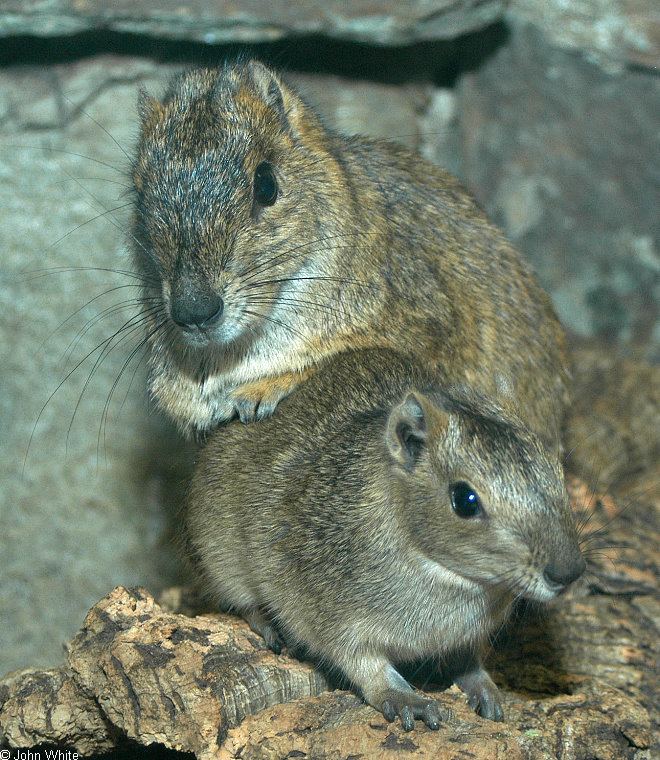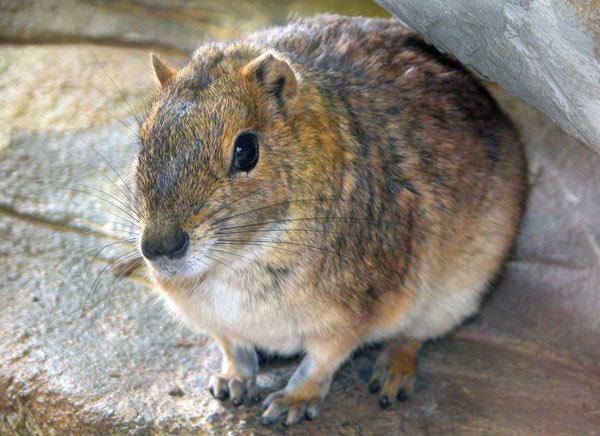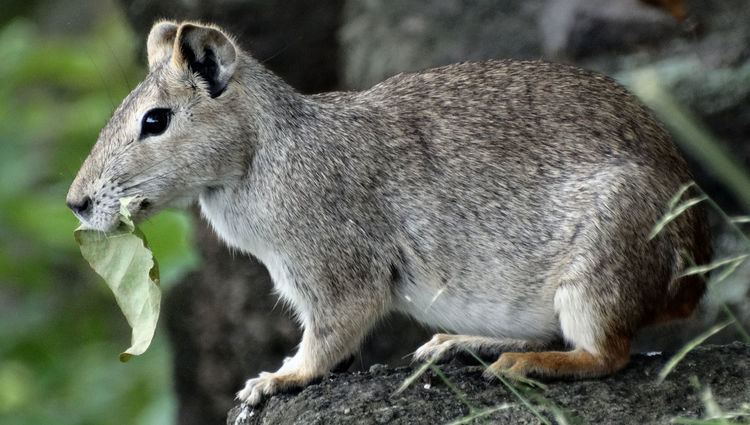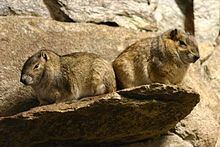Higher classification Kerodon | Phylum Chordata Scientific name Kerodon rupestris Rank Species | |
 | ||
Similar Kerodon, Rodent, Cavies, Galea, Mammal | ||
Rock cavy
The rock cavy or mocó (Kerodon rupestris) is a cavy species endemic to eastern Brazil, from eastern Piauí state to Minas Gerais state. It has been introduced to the oceanic island of Fernando de Noronha.

Rock cavies are found in dry, rocky areas with low, scrubby vegetation, and close to stony mountains and hills, resembling another (only distantly related) creature, the rock hyrax. They usually shelter in crevices. The males are territorial, defending rock pile shelters against other adult males.

The rock cavy is a fairly large rodent weighing up to 1 kg (2.2 lb) and, as in other cavies, the tail is vestigial or absent. The dorsum is grey and the venter light brown.

They feed on seed and leaves of the scrubby vegetation that grows in their territories. They live in groups and give birth to one or two young only, but several litters per year are common. The gestation period averages 75 days. They can sometimes display homosexual behavior, with males courting males. Some paedophilical behavior has also been displayed, with adult males courting juvenile males. Each group has an alpha or dominant male and several females.

Rock cavies are common, and they are frequently hunted for food by local human populations.
